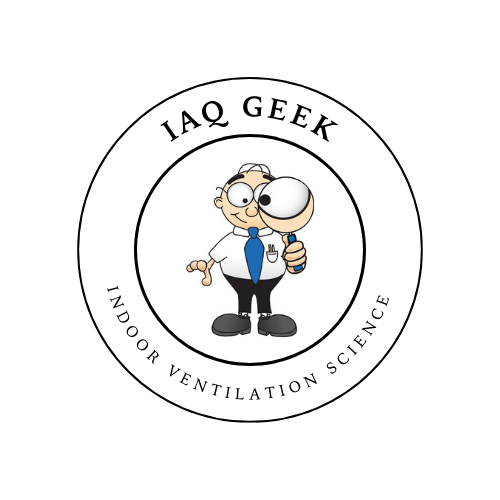Ventilation as a Fundamental Aspect of Building Design
Ventilation, often goes unnoticed until there is an issue, yet its history is rich and fascinating. In this post, we’ll take a conversational journey through the history of ventilation, exploring how it has evolved over the centuries to become the essential system we rely on today. The importance of adequate ventilation cannot be overstated; it directly impacts indoor air quality, energy efficiency, and the health of occupants. Whether you’re an architect, engineer, or just a curious professional, understanding the origins and advancements in ventilation can provide valuable insights into current best practices and future innovations. For instance, modern buildings now integrate smart ventilation systems that adjust based on occupancy and air quality levels, showcasing how far we’ve come. So, let’s dive into the beginning of ventilation and uncover the stories behind the designs that keep our indoor environments comfortable and healthy.
Until about 1890, the science of heating and ventilation was not well understood. Most of the work was done by contractors, and very few were educated or had any formal training in engineering. Installations of heating and ventilating systems were based upon the ancient rule of thumb, relying heavily on calculations related to data in fan manufacturers’ catalogs. This lack of formal training led to systems that were often inefficient and ineffective. The concept of indoor air quality was virtually nonexistent, leading to discomfort and health issues in many buildings. As we will see, the evolution of understanding in this field has led to innovations that prioritize both comfort and health.
Stewart A. Jellett, a charter member and the second president of The American Society of Heating and Ventilating Engineers (ASHVE), believed “the general public was getting poor return for its money” with the installation of some heating and ventilation systems. He stated that many engineers were generally ignorant on the subject, with a shocking 75 percent of them fakers, who had patented schemes that prioritized profit over performance. This statement highlights a critical turning point in the industry where a need for professionalism and standards began to emerge. The demand for quality ventilation systems became apparent as individuals started to realize the direct correlation between air quality and health.
The results were systems that were unsatisfactory and not favorable for legitimate businesses. “It was the stress of competition, the commercial side of the business, that finally forced the recognition of the necessity for more scientific consideration, both in regard to the manufacture of the apparatus and in its application for regular work.” This was the genesis of a more educated workforce that began to seek out training and certification. The establishment of standards and guidelines was pivotal for ensuring the installation of effective heating and ventilation systems.

The Master Steam and Hot Water Fitters Association was formed in 1889 to protect the interests of contractors. Around this time, more sophisticated scientific approaches to heating and ventilation were being imported from Europe, particularly from England. Some members showed interest in these scientific approaches, leading to the presentation of several technical papers at the Association’s meetings. However, since the majority of the association’s members were business and salesmen, they were primarily interested in discussing business matters rather than the technicalities of heating and ventilation. This tension between business interests and scientific knowledge would shape the future of the industry. In conclusion, understanding the history of indoor ventilation reveals how far we’ve come in creating healthier and more comfortable indoor environments. From ancient practices to modern innovations, indoor ventilation has evolved significantly, reflecting our growing awareness of its importance for public health and well-being. While I may not be a licensed engineer, working in the field for over 30 years has given me a passion for this subject, motivating me to share insights and foster discussions among professionals like you. I invite you to share your thoughts and experiences in the comments below—let’s keep the conversation going!
Ultimately, the journey of ventilation is not just a technical story—it is a narrative of public health, comfort, and sustainability. As professionals in this field, we have the responsibility to stay informed and adapt to these advancements, ensuring that we continue to provide safe and healthy indoor environments for all.
As we look to the future, the integration of artificial intelligence in building management systems is set to revolutionize the way we approach ventilation. AI can analyze data from various sensors to optimize ventilation rates dynamically, ensuring that energy use is minimized while providing maximum comfort and air quality.
In addition, the rise of green building practices has also influenced ventilation design. Modern buildings are now constructed with energy efficiency in mind, utilizing passive ventilation techniques that harness natural airflow and reduce reliance on mechanical systems. This not only lowers energy costs but also minimizes the environmental impact of buildings.
Furthermore, the COVID-19 pandemic has placed an unprecedented spotlight on the importance of ventilation in public and private spaces. The understanding of airborne diseases has accelerated research into ventilation strategies that reduce virus transmission, leading to innovations such as ultraviolet (UV) light air purification systems. This new focus on health and safety is propelling the industry toward adopting stricter standards and enhancing the performance of ventilation systems.
Today, ventilation systems are not just about removing stale air; they now focus on enhancing indoor air quality through advanced filtration systems, humidity control, and even energy recovery systems that recycle energy from exhaust air. For example, the integration of HVAC systems with smart home technology allows for real-time monitoring of air quality and automated adjustments based on occupancy levels and environmental changes.
